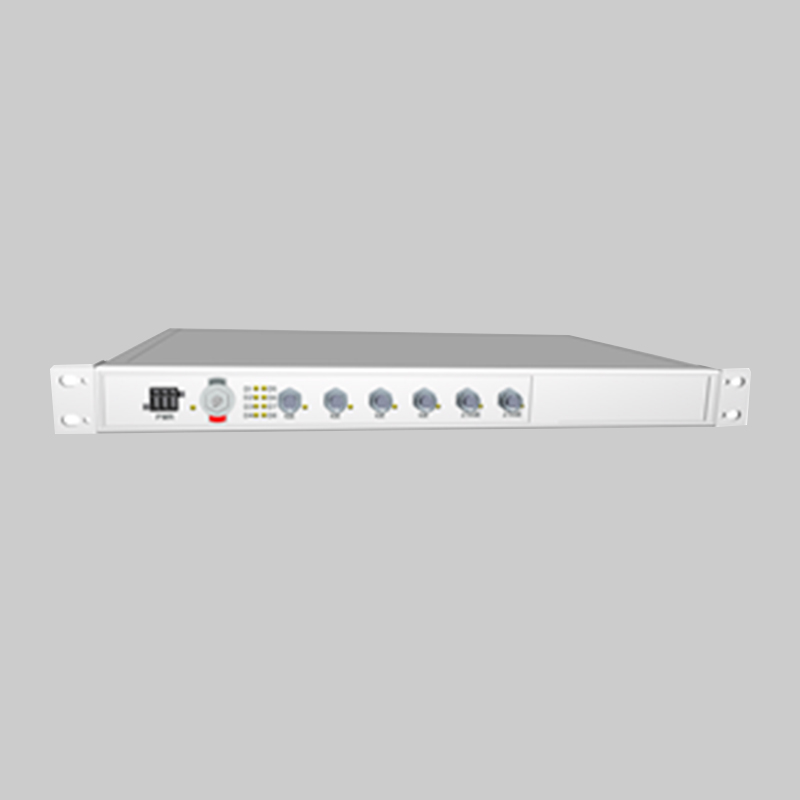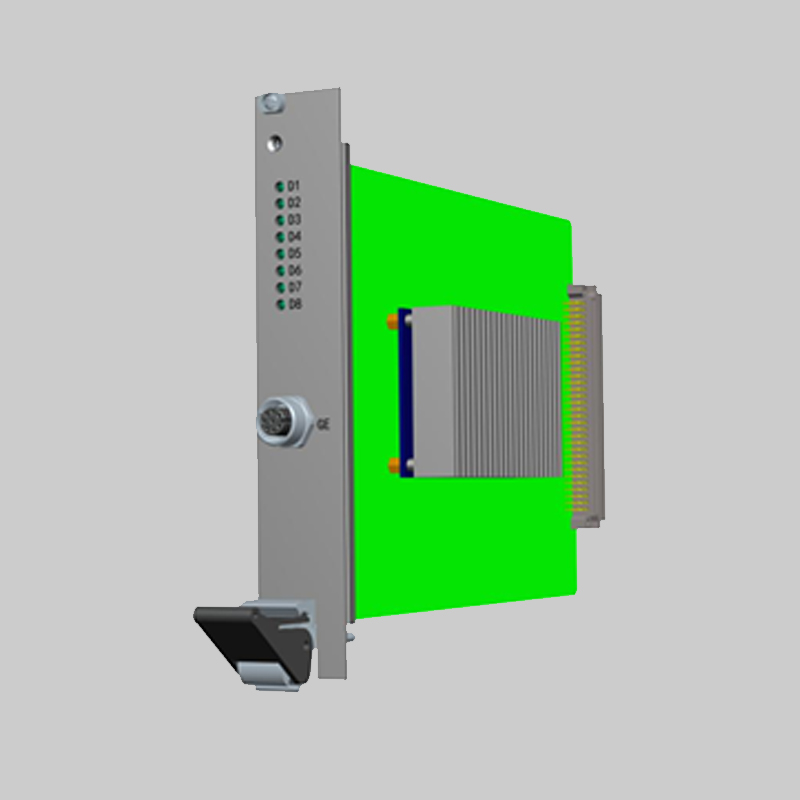
The impact of 5G technology on rail CCTV systems
2023-10-09 17:53BACKGROUND
The locomotive onboard safety protection system has played an essential role in monitoring locomotives' operating environment and status and supervising the implementation of standardized operations by locomotive crews. The system has improved the locomotive's ability to prevent safety accidents. Still, the daily video data generated by the system is mainly copied and dumped by the crew through USB flash drives and uploaded to the storage server of the locomotive section, which has problems such as data safety hazards and low dumping efficiency, as explained below.
The massive amount of video footage from the system is stored on the locomotive's hard drive and is copied and dumped by the crew via a USB stick. This method increases the workload of the staff and dispatchers and the burden of managing the USB flash drive in the aircraft section. If the USB flash drive is transferred to the storage without data, it must still be copied onboard or analyzed directly from the industry. In addition, with the use of USB flash drives for copying, there are many problems, such as susceptibility to virus infection, slow data download, easy damage to the USB interface, etc., which have different degrees of impact on the ground server and vehicle equipment.
With the development of 5G communication technology in recent years, the technology for high-speed transmission of massive amounts of data has gradually matured. 5G ultra-broadband technology can quickly transmit all locomotive data to the ground and achieve safe, reliable and efficient data dumping.
What is 5G millimetre-wave technology?
The system uses a 60GHz high-frequency millimetre wave, which has the advantages of mature technology, large bandwidth, no spectrum application, and low interference far away from common civilian frequency points.
In traditional wireless communication, its oxygen-degradation transmission characteristics make it difficult to transmit over long distances, and its application is limited. At the same time, this feature fits the needs of short-range communication and signal leakage prevention in vehicle-to-ground backhaul scenarios.

I. System Introduction
The 5G vehicle-to-ground data high-speed dump system consists of a 5G millimetre wave vehicle-to-ground transmission system and a distributed cloud storage system. The high-speed download of locomotive data is achieved by installing 5G transmission devices on the locomotives and building dedicated 5G base stations in the preparation yard and at crucial interchange points.
1.1 5G millimetre wave vehicle-to-ground transmission system
The vehicle-to-ground transmission system consists of an on-board 5G system and a ground-based 5G base station system. The 60GHz millimetre wave technology solution is used, which is achieved by installing a 60GHz millimetre wave phased array antenna on the vehicle and building a dedicated 60GHz base station on the ground for vehicle-to-ground dumping.
1). The onboard 5G system consists of a high-speed buffer pool, a security gateway and a 5G onboard antenna, which realizes the storage, redundancy backup and data interaction security functions for locomotive video, LKJ and TCMS. It transmits this data to the ground base station system.
2). The ground 5G base station system includes a 5G ground base station RBS and ground cache server to achieve automatic, high-speed and secure onboard data storage on the ground.
3). When the locomotive enters the coverage area of the 5G base station, the onboard 5G system terminal (TAU) and the ground-based 5G base station (RBS) automatically establish a connection. And initiate a dump to quickly dump the onboard data in the locomotive buffer pool to the ground cache server. The whole process is automatically completed without manual intervention.
1.2 Distributed Cloud Storage Systems
The distributed data storage system uses a distributed storage architecture to manage the data downloaded to the individual ground base station systems. Establish data cluster nodes and video data sub-centres to provide virtualized storage space for cross-sectional and cross-node real-time access.
II.5G millimetre wave vehicle-to-ground transmission system
The 5G millimetre wave vehicle-to-ground transmission system consists of an onboard 5G system and a ground-based 5G base station system that transmits onboard data to the ground-based base station. When the locomotive is in the coverage area of the 5G base station, the onboard 5G system establishes a high-speed connection with the ground 5G base station system. It initiates a dump to quickly dump onboard data from the locomotive buffer pool to the ground cache. The 5G wireless link provides a high-bandwidth, secure and reliable pipeline transmission data stream, and the process is completed automatically. The diagram below shows the system architecture.
2.1 In-vehicle 5G systems
The in-vehicle 5G system includes an in-vehicle security gateway, a buffer pool and an in-vehicle 5G antenna (TAU).
2.1.1 Security Gateway
The primary function of the security gateway is to obtain video from the system av3 board and pass it through to the cache pool. The gateway can consider the earlier 6A hardware versions, reducing the pressure on the CPU and DDR resources to saturate the video board and facilitate uniform maintenance in the future.
2.1.2 High-speed buffer pool
The cache pool communicates with the security gateway through a 1GE network card to pull audio and video streams in real-time for local storage. When the locomotive enters the station or the preparation yard, the point-to-point connection successfully communicates with the onboard base station through the 2.5GE network to upload the cached historical audio and video data to the ground-based high-speed storage system through the onboard base station.
2.1.3 Automotive 5G Antenna (TAU)
The vehicle-to-ground dump system's onboard 5G antenna (TAU) equipment integrates a phased array antenna, provides a 2.5GE service electrical interface and is installed on the locomotive's roof to establish a high-speed data channel with the ground 5G base station.
2.2 Ground-based 5G base station system
Establish a ground 5G base station system at the locomotive maintenance yard. The method comprises 5G base station equipment, a high-speed storage server and an intelligent analysis server.
2.2.1 5G Base Station Equipment (RBS)
Like the TAU, the ground 5G base station equipment (RBS) integrates a phased array antenna, providing a 10GE service optical interface and a GE service electrical interface. The device offers the access point of the 5G vehicle antenna, receives the data downloaded from the vehicle, and saves it in the cache server.
2.2.2 Cache Server
The cache server stores data downloaded from the locomotive and acts as a node for the distributed data storage system, supporting synchronization and data sharing across regions.
2.2.3 Intelligent Analytics Server
Based on the LKJ information in the cache server, the intelligent analysis server analyses the item points used by the machine service. It automatically transmits the smart analysis results to the section headquarters.
IV. Data centre, data access node and data analysis room construction
3.1 Framework
A 5G base station system is built in the preparation yard, and a data access node is established to automatically remit the data downloaded by 5G to the section data centre. Each data centre stores segment-level video and locomotive operation data. The data analysis centre of each unit can synchronise video and locomotive operation data from the data centre on demand to achieve low latency access.
3.2 Distributed Storage System
Build a distributed data storage system in the data centre. The system centralizes data management and uses a virtual file system to provide a unified user interface to enable cross-regional access to data.
The specific functions are as follows.
1. Distributed architecture is used. System performance and capacity increase linearly with the number of nodes.
2. Realize storage space virtualization management, virtualize all physical storage resources into a unified storage space, provide a unified global namespace, and provide unique business IP address access to the outside world.
3. Implement redundancy policies when a single node with multiple hard disk failures, and read and write services are unaffected. When multiple nodes fail, it supports data recovery and reconfiguration at various speeds between nodes to minimize the impact on read and document services.
4. Support online upgrade function, can realize online new node capacity, interface, and intermediate data storage with existing nodes when the system is running, and support load balancing.
5. Realize real-time monitoring of software version, hardware status and system capacity usage, and have real-time update alarm information function.
V.Advanced & Innovative
1.5G millimetre wave transmission is highly efficient, with peak rates of up to 1.5Gbps, 30 times higher than 4G transmission rates.
2. low time delay, locomotive data into the range of the base station in a timely and effective back transmission and can be accessed in the section network.
3. Broken link transmission to ensure the integrity and reliability of video data.
4. Automatic load balancing, automatic link disconnection after completion of transmission, and releasing resources to ensure stable and efficient video dumping of the system.
5. Security, using the unique point-to-point network and establishing logical tunnel particular transmission.
6. High reliability, superior anti-static, anti-electromagnetic interference function, adapt to the ambient temperature can reach -40℃~70℃.
7. Data security, the collected data is encrypted through the video, taken stream card, and stored in the buffer pool.
8. Data dumping replaces manual work, reducing labour intensity and security risks.
9. Link failure, the system immediately alarms, and operations and maintenance personnel quickly respond to ensure the system's stable operation.
10. Distributed data management system is adopted, data is automatically backed up, and storage capacity can be dynamically expanded.
11. Support storage redundancy strategy; when a single node failure occurs, support for data recovery and reconfiguration between nodes at various speeds to maximize the impact of read and write service.


